PRC Association
The Forest
Discovery Center
Premium Map / Book
Order our Waterproof Pigeon River Country Map and Book.
Discovery Center Mailing List
Upcoming Events
All About Plants Youth Program
Date: June 22, 2025 Time: 1:00pm - 2:30pm Bring the family to the Discovery Center for a free workshop to learn about the PRC and build a fun nature-based item […]
Michigan’s Raptors
Date: July 19th (Saturday) Time: 1pm - 2pm: Kid Friendly / 3pm - 4pm: Adult Focused Presenter: James Manley, Executive Director of Skegemog Raptor Center Come see and learn about […]
Elk Viewing
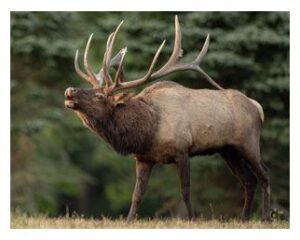 In 1918, seven elk were reintroduced near Wolverine. The herd is now maintained at up to 900 animals, primarily through habitat management and annual elk hunts since 1984. It is established policy to manage population and habitat so the PRC remains the nucleus of Michigan’s elk herd.
In 1918, seven elk were reintroduced near Wolverine. The herd is now maintained at up to 900 animals, primarily through habitat management and annual elk hunts since 1984. It is established policy to manage population and habitat so the PRC remains the nucleus of Michigan’s elk herd.
The best time for viewing elk has been the September and early October mating season. The bulls make loud vocalizations (bugling), break brush, and sometimes spar for dominance with their antlers. Another good time has been late April through mid-May when elk are active throughout the daylight hours eating new green growth. Elk viewing sites are managed to attract elk with rye, clover, alfalfa, and buckwheat, but are not the only places elk can be seen.

In 1918, seven elk were reintroduced near Wolverine. The herd is now maintained at up to 900 animals, primarily through habitat management and annual elk hunts since 1984. It is established policy to manage population and habitat so the PRC remains the nucleus of Michigan’s elk herd.
The best time for viewing elk has been the September and early October mating season. The bulls make loud vocalizations (bugling), break brush, and sometimes spar for dominance with their antlers. Another good time has been late April through mid-May when elk are active throughout the daylight hours eating new green growth. Elk viewing sites are managed to attract elk with rye, clover, alfalfa, and buckwheat, but are not the only places elk can be seen.
Where To See Elk
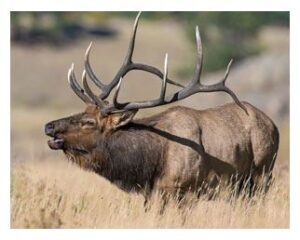 Some viewing areas have been planted with rye, clover, alfalfa or buckwheat. These crops along with the natural grasses and forbs provide food for these large herbivores. Parking places are provided where good visibility is afforded.
Some viewing areas have been planted with rye, clover, alfalfa or buckwheat. These crops along with the natural grasses and forbs provide food for these large herbivores. Parking places are provided where good visibility is afforded.
The following are designated viewing areas:
- 3.5 miles east of Vanderbilt on Sturgeon Valley Road, then 3 miles north on Fontinalis Road
- 8 miles east of Vanderbilt on Sturgeon Valley Road at a pipeline corridor
- 4 miles north of the Pigeon River Country State Forest Headquarters on Osmun Road
- 18 miles east of Gaylord on County Road 622.
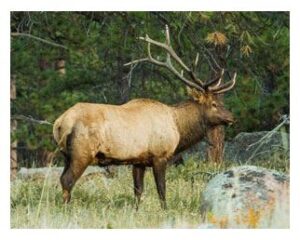 Elk viewing is not confined to these designated areas. Many grassy meadows have been improved for deer, elk and other wildlife that utilize this type of habitat. Elk may be seen in and around these meadows or just by chance almost anywhere in the elk range. Attempting to locate and see elk at night with a spotlight is legal but remember, like for deer, it is illegal between 11:00 p.m. and 6:00 a.m. (no firearms are allowed in any vehicle that is spotlighting at any time). Spotlighting is legal during all months except November when it is not legal to shine at all.
Elk viewing is not confined to these designated areas. Many grassy meadows have been improved for deer, elk and other wildlife that utilize this type of habitat. Elk may be seen in and around these meadows or just by chance almost anywhere in the elk range. Attempting to locate and see elk at night with a spotlight is legal but remember, like for deer, it is illegal between 11:00 p.m. and 6:00 a.m. (no firearms are allowed in any vehicle that is spotlighting at any time). Spotlighting is legal during all months except November when it is not legal to shine at all.
When To See Elk
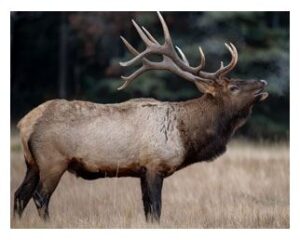 Elk can be seen anytime of the year but like any wildlife are more visible at certain times of day and year. Like deer, elk are most active early in the day and toward evening and during the night. During hot summer months, June through August, elk are probably the hardest to find, just at the typical vacation time for many people. Still, if you cruise some of the best areas at the crack of dawn or just before dark, you may see a large bull with antlers in velvet or a group of elk cows with their calves.
Elk can be seen anytime of the year but like any wildlife are more visible at certain times of day and year. Like deer, elk are most active early in the day and toward evening and during the night. During hot summer months, June through August, elk are probably the hardest to find, just at the typical vacation time for many people. Still, if you cruise some of the best areas at the crack of dawn or just before dark, you may see a large bull with antlers in velvet or a group of elk cows with their calves.
September and October are prime months to watch elk. The breeding season or rut begins in early September and peaks around September 20th. Large herd bulls with their polished antlers gleaming gather cows into harems for the annual breeding season. 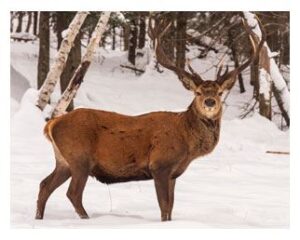 Smaller satellite or non-breeding bulls hang around the vicinity of the harem. These congregations of elk usually number between 10 and 20. Grassy meadows are focal points.
Smaller satellite or non-breeding bulls hang around the vicinity of the harem. These congregations of elk usually number between 10 and 20. Grassy meadows are focal points.
The establishment of dominance among bulls and early stages of harem formation are exciting times to watch elk. When several large bulls are bugling and breaking brush with antlers to help impress rival bulls, it can raise the hair on your neck. Recreational bugling, by people, to attract or stimulate bulls to bugle is at its best at this time.
You are most likely to see elk early in the day and again just before dark. You likely will not be alone at these viewing areas. The opportunity to see elk will be enhanced If everyone sits quietly and avoids going into the fields. Don’t forget your binoculars.
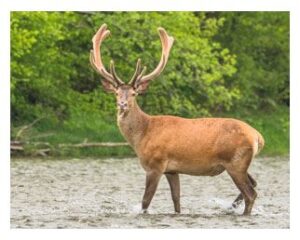 During the winter, when snow covers the ground, elk can be found near logging operations or in recently logged areas that have an abundance of young woody sprouts. But please remember winter is a stressful time of year for animals. Not only is it illegal to chase after or otherwise harass wildlife with a snowmobile, it is not good for the health of the animals.
During the winter, when snow covers the ground, elk can be found near logging operations or in recently logged areas that have an abundance of young woody sprouts. But please remember winter is a stressful time of year for animals. Not only is it illegal to chase after or otherwise harass wildlife with a snowmobile, it is not good for the health of the animals.
HUNTING
Elk hunting is the primary tool used to maintain the balance between elk numbers and habitat, while also addressing crop damage concerns. Between 30,000 and 40,000 people apply for a chance to hunt elk every year. The number of licenses issued generally ranges from 100-400.
MANAGEMENT
Elk are primarily grazers and browsers. They prefer a landscape with open young habitat. The DNR manages state land by cutting old timber to create forests, by planting food plots, and by using prescribed burning.
